I didn’t expect to spend more than three minutes out of my car, yet the sun was so brutal I put on my hat before approaching the seawall.
Beimen (北門) is the flattest and most sun-baked part of Tainan. It lacks trees and people. In wintertime, the weather is often delightful. It wasn’t yet mid-morning in the hot season, however, and I felt like a leaf shriveling in the desert.
Atop the seawall but facing inland, I could see dozens of the rectangular ponds which account for a significant percentage of Beimen’s “land” area. Some, no doubt, were dug to produce salt by evaporating seawater. In a few, paddlewheel aerators were kicking up spray, but I didn’t notice as much evidence of fish farming as I’d expected. Taiwan is lush and crowded, but the lack of greenery and human activity here bordered on the eerie.
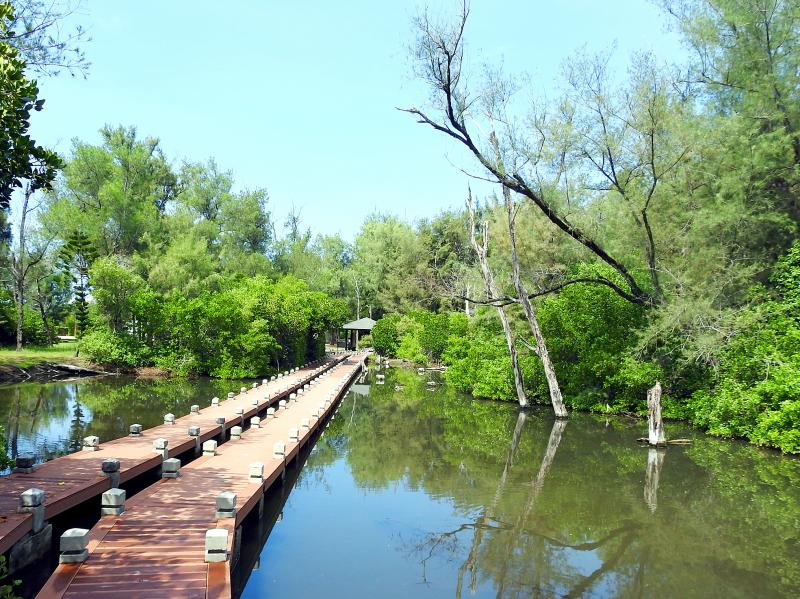
Photo: Steven Crook
Back in the car and moving north on Provincial Highway 17, I passed Nankunshen Daitianfu Temple (南鯤鯓代天府), then turned left. Willing to give my heat endurance another test, I parked at Beimen Important Wetland (北門重要濕地) and set out on foot.
The wetland is substantial but spoiled. The Ministry of the Interior’s “Ramsar Citizen” Web site admits only small portions of it are natural wetland, much of its 1,791 hectares being abandoned oyster farms and collapsing salt pans.
The trash alongside Jishuei River (急水溪) looked like it’d been dumped there by humans, not carried in by the tide. Building Expressway 61 through the heart of the wetland can’t have been good for local ecosystems. After five sweltering minutes down by the water’s edge, I left, feeling utterly unimpressed.
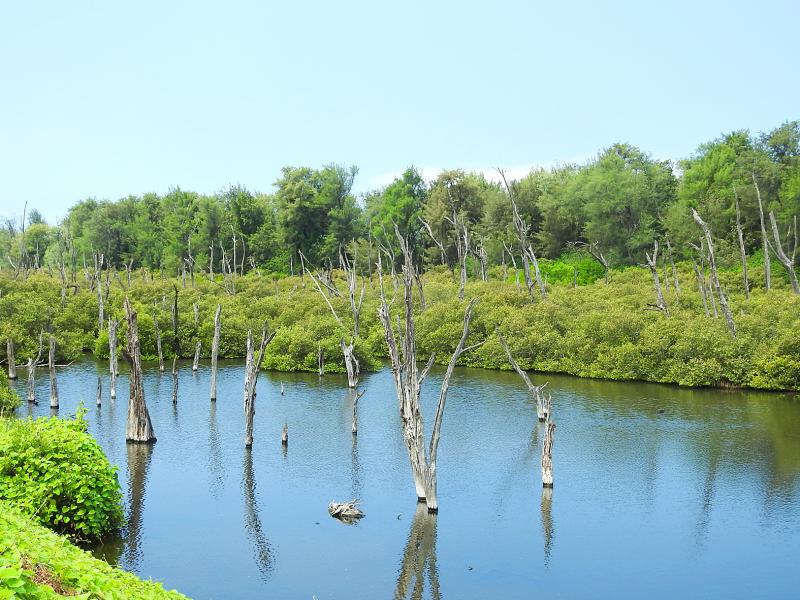
Photo: Steven Crook
I still had high hopes for Shuangchun Coastal Recreation Area (雙春濱海遊憩區). I’d been before, years ago, and knew I could at least expect some shade.
Since my previous visit, the recreation area has been rebranded as Vanaheim, a name apparently taken from Old Norse mythology, in which it was the realm of the gods of fertility, wisdom and precognition. It’s now possible to sleep inside the recreation area, in your own tent, or in an air-conditioned yurt for up to four people.
Some of the tourists who’ve spent the night here have complained about the number of mosquitoes, while others were delighted to see so many crabs active after dark. The late-afternoon boat tours — included in the price of accommodation — go down well.
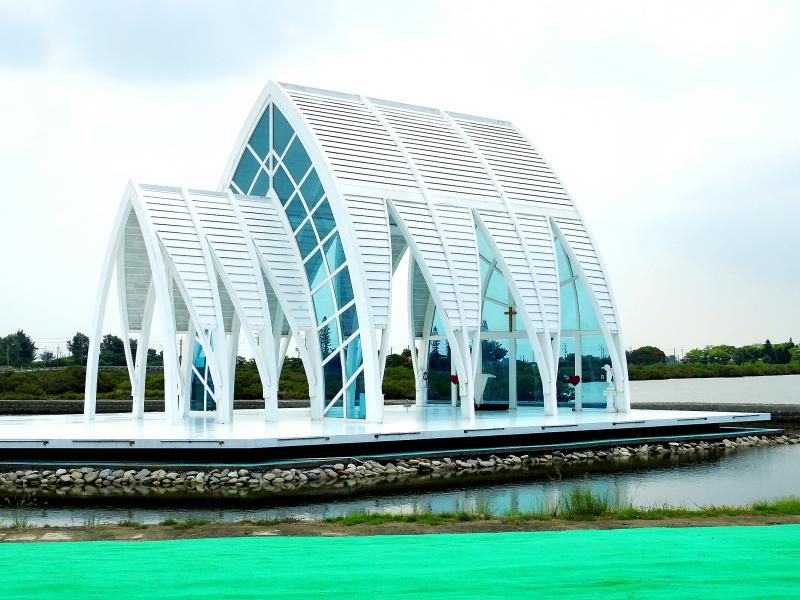
Photo: Steven Crook
After investing NT$50 on an admission ticket (visitors pay between NT$150 and nothing, depending on how old they are and where they live), I set off past the yurts and onto one of the boardwalks that wind through Shuangchun’s mangrove forests.
The bilingual information boards looked like they hadn’t been renewed in a good while, but they helped me identify a few plants. After my visit, I learned more by reading a 2002 presentation given by Fan Kuei-chu (范貴珠), an associate professor in the Department of Forestry, National Pingtung University of Science and Technology.
According to Fan, much of Taiwan’s west coast is ideal for mangroves, and their ecological role is well understood. These woody plants protect coastlines from erosion and storm surges, while nurturing birds, crabs, and other creatures.
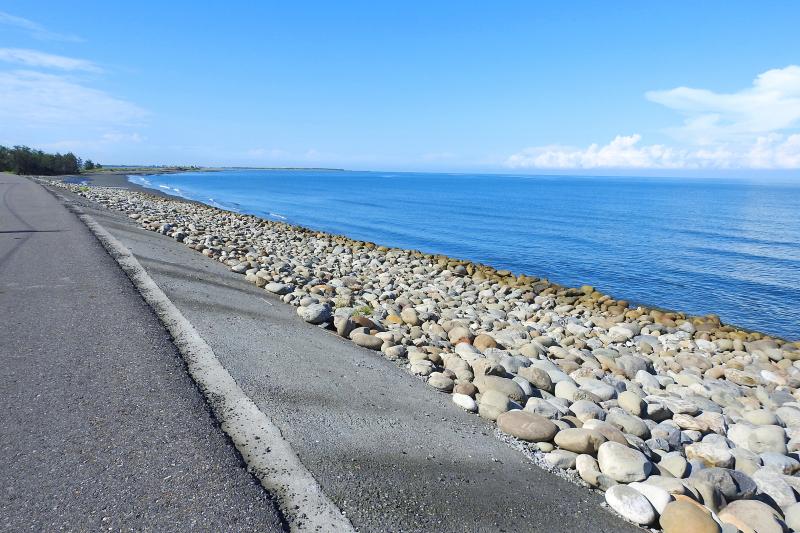
Photo: Steven Crook
Unfortunately, postwar development and pollution decimated Taiwan’s mangrove forests. By the early 1980s, they covered a mere 120 hectares. But since then, Fan writes, that total has more than doubled.
Fan describes the restoration efforts at Shuangchun — which included the planting of 75,000 mangrove seedlings — as “the most successful mangrove restoration project in Taiwan.” Hundreds of dead Casuarina trees, planted long ago to form a windbreak, were cleared to make space, and shallow channels were dug to improve water flow.
However, it would be wrong to view surviving patches of mangroves as relics of a pristine, preindustrial world. Of the four types of mangrove which thrive in 21st-century Taiwan, only Kandelia candel is likely to be a native species. Fan points out that the others were transplanted from Southeast Asia in the 1940s.

Photo: Steven Crook
Shuangchun is one of the best places in Taiwan for getting up close to Kandelia candel (notable for producing tiny flowers like white starfish), Avicennia marina (which has light gray bark, and sometimes excretes salt through its leaves), Lumnitzera racemosa (also known as the white-flowered black mangrove), and Rhizophora stylosa (the red or stilted mangrove). Compared to Kandelia candel, the other three are less resistant to cold weather, so seldom thrive north of Chiayi.
I was determined to explore every inch of the 80-hectare recreation area, and keen to see what lived among the mangroves. I glimpsed scores of dirt-colored crabs, plenty of mudskippers (none bigger than my pinky) and a couple of egrets, but nothing too unusual.
More intriguing was a submerged section of boardwalk. I wondered if the posts supporting it had sunk deeper into the mud than the designers had anticipated, or if it had fallen victim to rising sea levels. Perhaps the real cause was the overpumping of groundwater. This has led to land subsidence in several places in southwestern Taiwan. In Chiayi County, several hectares of Avicennia marina died out because the land on which they’d grown sank by up to 90cm.
If you’ve an interest in ecotourism, you’ll find the recreation area worth touring. Just don’t go if your stomach is empty. To find some lunch, I had to drive to Beimen Visitors Center (北門遊客中心). Near it, I spotted Beimen Crystal Church (北門水晶教堂).
Some describe this newish addition to the landscape as a pocket-sized Sydney Opera House, and I can see the resemblance. Even if you feel it’s a fake church built for Instagrammers — it doesn’t pretend to be a legitimate place of worship — it’s an appealing sight. It’s open seven day a week; admission is NT$20.
Steven Crook has been writing about travel, culture and business in Taiwan since 1996. He is the author of Taiwan: The Bradt Travel Guide and co-author of A Culinary History of Taipei: Beyond Pork and Ponlai.

When life gives you trees, make paper. That was one of the first thoughts to cross my mind as I explored what’s now called Chung Hsing Cultural and Creative Park (中興文化創意園區, CHCCP) in Yilan County’s Wujie Township (五結). Northeast Taiwan boasts an abundance of forest resources. Yilan County is home to both Taipingshan National Forest Recreation Area (太平山國家森林遊樂區) — by far the largest reserve of its kind in the country — and Makauy Ecological Park (馬告生態園區, see “Towering trees and a tranquil lake” in the May 13, 2022 edition of this newspaper). So it was inevitable that industrial-scale paper making would

Asked to define sex, most people will say it means penetration and anything else is just “foreplay,” says Kate Moyle, a psychosexual and relationship therapist, and author of The Science of Sex. “This pedestals intercourse as ‘real sex’ and other sexual acts as something done before penetration rather than as deserving credit in their own right,” she says. Lesbian, bisexual and gay people tend to have a broader definition. Sex education historically revolved around reproduction (therefore penetration), which is just one of hundreds of reasons people have sex. If you think of penetration as the sex you “should” be having, you might
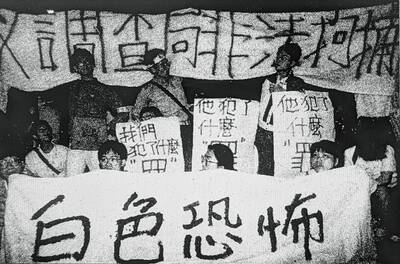
July 21 to July 27 If the “Taiwan Independence Association” (TIA) incident had happened four years earlier, it probably wouldn’t have caused much of an uproar. But the arrest of four young suspected independence activists in the early hours of May 9, 1991, sparked outrage, with many denouncing it as a return to the White Terror — a time when anyone could be detained for suspected seditious activity. Not only had martial law been lifted in 1987, just days earlier on May 1, the government had abolished the Temporary Provisions Effective During the Period of National Mobilization for Suppression of the Communist
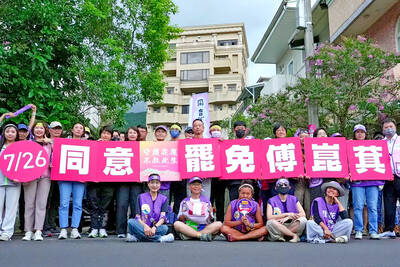
Hualien lawmaker Fu Kun-chi (傅?萁) is the prime target of the recall campaigns. They want to bring him and everything he represents crashing down. This is an existential test for Fu and a critical symbolic test for the campaigners. It is also a crucial test for both the Chinese Nationalist Party (KMT) and a personal one for party Chairman Eric Chu (朱立倫). Why is Fu such a lightning rod? LOCAL LORD At the dawn of the 2020s, Fu, running as an independent candidate, beat incumbent Democratic Progressive Party (DPP) lawmaker Hsiao Bi-khim (蕭美琴) and a KMT candidate to return to the legislature representing